-
 Bitcoin
Bitcoin $108,250.0992
0.11% -
 Ethereum
Ethereum $2,515.9404
0.03% -
 Tether USDt
Tether USDt $1.0003
0.00% -
 XRP
XRP $2.2166
-0.19% -
 BNB
BNB $656.5904
0.29% -
 Solana
Solana $147.4122
-0.58% -
 USDC
USDC $1.0000
-0.01% -
 TRON
TRON $0.2830
0.06% -
 Dogecoin
Dogecoin $0.1641
0.27% -
 Cardano
Cardano $0.5739
-0.19% -
 Hyperliquid
Hyperliquid $39.1463
-0.11% -
 Sui
Sui $2.8882
-0.02% -
 Bitcoin Cash
Bitcoin Cash $487.6428
0.31% -
 Chainlink
Chainlink $13.2097
0.07% -
 UNUS SED LEO
UNUS SED LEO $9.0308
0.10% -
 Avalanche
Avalanche $17.8608
0.13% -
 Stellar
Stellar $0.2379
-0.06% -
 Toncoin
Toncoin $2.7400
-0.39% -
 Shiba Inu
Shiba Inu $0.0...01144
-0.36% -
 Litecoin
Litecoin $87.5467
0.66% -
 Hedera
Hedera $0.1538
0.22% -
 Monero
Monero $315.5479
0.36% -
 Dai
Dai $1.0000
0.00% -
 Polkadot
Polkadot $3.3523
-0.71% -
 Ethena USDe
Ethena USDe $1.0003
0.01% -
 Bitget Token
Bitget Token $4.3960
-1.03% -
 Uniswap
Uniswap $7.2663
4.19% -
 Aave
Aave $272.8619
2.04% -
 Pepe
Pepe $0.0...09676
-0.18% -
 Pi
Pi $0.4586
-2.87%
What is the scalability problem of a blockchain?
Blockchain scalability faces challenges like low transaction throughput, large block sizes causing storage issues, and network bandwidth limitations, impacting speed and user experience; off-chain solutions like sharding offer improvements.
Mar 04, 2025 at 12:06 pm
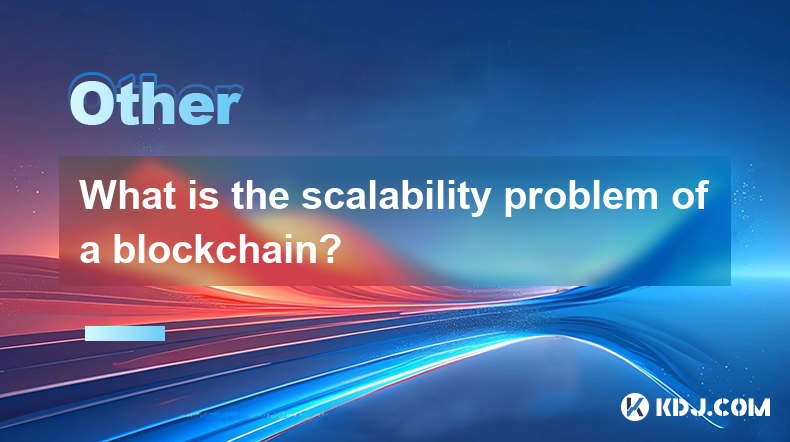
What is the Scalability Problem of a Blockchain?
Key Points:
- Transaction Throughput: Blockchains face limitations in the number of transactions they can process per second (TPS). This directly impacts the speed and efficiency of the network.
- Block Size and Latency: The size of blocks and the time it takes to create and validate them (latency) significantly influence scalability. Larger blocks can increase throughput but require more storage and bandwidth. Increased latency leads to slower transaction confirmation times.
- Network Bandwidth: The capacity of the network to handle the flow of data is crucial. As the number of users and transactions increases, so does the demand on network bandwidth. Insufficient bandwidth can lead to congestion and slowdowns.
- Storage Requirements: Each node in a blockchain network needs to store a copy of the entire blockchain. As the blockchain grows, storage requirements increase exponentially, making it challenging for individuals and smaller nodes to participate.
- Consensus Mechanisms: The method used to validate transactions (e.g., Proof-of-Work, Proof-of-Stake) directly impacts scalability. Some consensus mechanisms are inherently slower and less efficient than others.
- Off-Chain Scaling Solutions: Various techniques like layer-2 scaling solutions (e.g., Lightning Network, Plasma) and sharding are employed to address scalability limitations without fundamentally altering the underlying blockchain.
Understanding Blockchain Scalability Challenges:
The scalability problem in blockchain refers to the inherent limitations of blockchain technology in handling a large number of transactions efficiently and quickly. While blockchain's decentralized and secure nature are highly valuable, these features often conflict with the need for high throughput. Let's delve deeper into the various facets of this challenge:
- Transaction Throughput: This refers to the number of transactions a blockchain can process per second. Early blockchains like Bitcoin were designed with a relatively low TPS limit (around 7 transactions per second for Bitcoin), which is insufficient for widespread adoption as a payment system for everyday transactions. High TPS is crucial for applications requiring fast and efficient processing, such as decentralized exchanges (DEXs) or payment systems handling a large volume of transactions. Low TPS leads to transaction delays, increased fees, and a poor user experience. The challenge lies in finding a balance between security and speed; increasing TPS often requires compromising on the security and decentralization aspects of the blockchain. Many projects are exploring various solutions to improve TPS without sacrificing security, such as optimized consensus mechanisms and sharding.
- Block Size and Latency: The size of a block (the amount of data it can hold) and the time it takes to add a new block to the blockchain (latency) are critical factors influencing scalability. Larger block sizes can theoretically increase throughput, allowing more transactions to be processed per block. However, larger blocks demand more storage capacity from each node in the network. This can make it difficult for individuals with limited resources to participate in the network, potentially leading to centralization. High latency, on the other hand, means slower transaction confirmation times, impacting the user experience and limiting the usability of the blockchain for real-time applications. Optimizing block size and latency requires a careful balance between throughput, storage requirements, and network bandwidth. Efficient data structures and optimized consensus mechanisms can contribute to reducing latency.
- Network Bandwidth: As the number of users and transactions on a blockchain increases, the demand for network bandwidth grows exponentially. Insufficient bandwidth can lead to network congestion, slow transaction processing times, and increased transaction fees. This is especially critical in networks with a high number of active nodes. Improving network bandwidth can involve upgrading network infrastructure, optimizing data transmission protocols, or employing techniques like network sharding to distribute the load across multiple sub-networks. The challenge is to ensure that the network can handle the increasing demand for data transfer without compromising the efficiency and stability of the blockchain.
- Storage Requirements: Every full node in a blockchain network needs to store a complete copy of the blockchain. As the blockchain grows larger, the storage requirements for each node increase proportionally. This poses a significant challenge for individuals and organizations with limited storage capacity, potentially excluding them from participating in the network and leading to centralization. The constant growth of the blockchain also consumes significant disk space and increases the time required for synchronization. Solutions to this challenge include techniques like pruning (removing old data from the blockchain) and employing lighter clients that do not store the entire blockchain. However, these solutions often compromise on the level of decentralization and security.
- Consensus Mechanisms: The consensus mechanism employed by a blockchain determines how transactions are validated and added to the blockchain. Different consensus mechanisms have different scalability properties. Proof-of-Work (PoW), commonly used in Bitcoin, is known for its security but suffers from low TPS and high energy consumption. Proof-of-Stake (PoS) mechanisms, on the other hand, are generally more energy-efficient and can achieve higher TPS, but they might be vulnerable to different types of attacks. The choice of consensus mechanism significantly impacts the scalability of a blockchain. Research into new and more efficient consensus mechanisms is ongoing, with a focus on balancing security, energy efficiency, and throughput.
- Off-Chain Scaling Solutions: Recognizing the limitations of on-chain scaling, developers have explored various off-chain solutions to improve the scalability of blockchain networks. These solutions aim to process transactions outside the main blockchain while still maintaining security and integrity. Layer-2 scaling solutions, such as the Lightning Network for Bitcoin and various Plasma implementations, are examples of this approach. They create separate channels for transactions, offloading the burden from the main blockchain. Sharding, another prominent technique, divides the blockchain into smaller, more manageable shards, allowing for parallel processing of transactions. While these off-chain solutions offer significant improvements in scalability, they also introduce complexities and potential trade-offs regarding security and decentralization. The optimal approach often involves a combination of on-chain and off-chain scaling techniques.
FAQs:
Q: What are the consequences of poor blockchain scalability?
A: Poor blockchain scalability can lead to several negative consequences, including:
- High transaction fees: As the network becomes congested, users are forced to pay higher fees to prioritize their transactions.
- Slow transaction speeds: Transactions can take a significant amount of time to confirm, making the blockchain impractical for real-time applications.
- Reduced user adoption: The poor user experience caused by high fees and slow speeds can discourage users from adopting the blockchain.
- Network congestion: The network can become overwhelmed, leading to delays and potential disruptions.
- Centralization: The difficulty of running a full node due to high storage requirements can lead to network centralization.
Q: How are different blockchains addressing the scalability problem?
A: Different blockchains are employing various strategies to address scalability challenges, including:
- Improved consensus mechanisms: Moving to more efficient consensus mechanisms like PoS.
- Layer-2 scaling solutions: Implementing off-chain scaling solutions like Lightning Network or Plasma.
- Sharding: Dividing the blockchain into smaller shards to process transactions in parallel.
- Optimized data structures: Employing more efficient data structures to reduce storage requirements and improve transaction processing speeds.
- Improved network infrastructure: Investing in faster and more robust network infrastructure.
Q: What is the difference between on-chain and off-chain scaling solutions?
A: On-chain scaling solutions involve modifying the core blockchain protocol to improve its scalability, while off-chain scaling solutions process transactions outside the main blockchain, leveraging the main chain only for final settlement. On-chain solutions are generally more secure but can be more challenging to implement, while off-chain solutions can offer greater scalability but may compromise on security or decentralization if not carefully designed.
Q: Are there any trade-offs involved in improving blockchain scalability?
A: Yes, improving blockchain scalability often involves trade-offs. For example, increasing transaction throughput might require compromising on security or decentralization. Larger block sizes improve throughput but increase storage requirements for nodes. Off-chain solutions can offer greater scalability but might introduce complexities and security risks if not properly implemented. Finding the right balance between these trade-offs is a critical challenge in blockchain development.
Q: What is the future of blockchain scalability?
A: The future of blockchain scalability is likely to involve a combination of on-chain and off-chain scaling solutions, along with ongoing research into new consensus mechanisms and data structures. The development of more efficient and secure scaling solutions is crucial for the widespread adoption of blockchain technology. Continued innovation in this area will be key to unlocking the full potential of blockchain for various applications.
Disclaimer:info@kdj.com
The information provided is not trading advice. kdj.com does not assume any responsibility for any investments made based on the information provided in this article. Cryptocurrencies are highly volatile and it is highly recommended that you invest with caution after thorough research!
If you believe that the content used on this website infringes your copyright, please contact us immediately (info@kdj.com) and we will delete it promptly.
- Litecoin Breakout Watch: What Traders Need to Know Now
- 2025-07-06 16:50:13
- Bitcoin, Solana, Ethereum: Decoding the Latest Buzz on the Blockchain
- 2025-07-06 16:50:13
- Widnes Resident's 50p Could Be Your Ticket to Easy Street: Rare Coin Mania!
- 2025-07-06 16:55:13
- Bitcoin, Solaris Presale, and Token Rewards: What's the Buzz?
- 2025-07-06 16:55:13
- Ethereum Under Pressure: Price Drop Amid Global Uncertainties
- 2025-07-06 17:00:13
- XRP, SEC Case, and Prosperity: A New Era for XRP Holders?
- 2025-07-06 17:10:13
Related knowledge
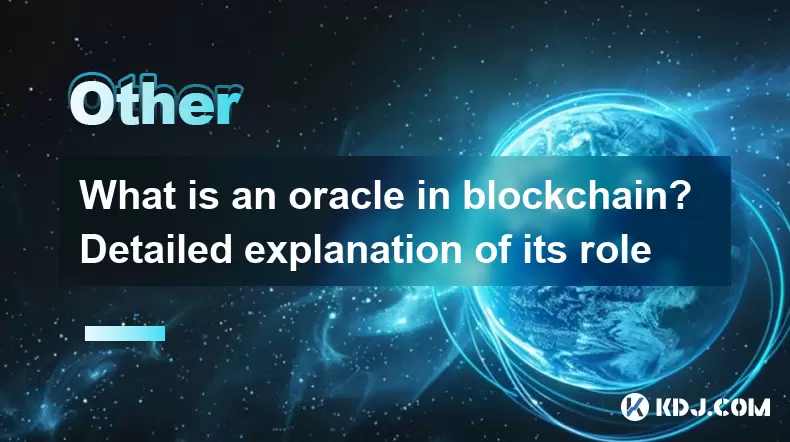
What is an oracle in blockchain? Detailed explanation of its role
Jun 21,2025 at 06:14am
Understanding the Concept of an Oracle in BlockchainIn the realm of blockchain technology, an oracle is a trusted third-party service that connects smart contracts with real-world data. Smart contracts are self-executing agreements where the terms are written directly into code and run on a blockchain network. However, these contracts operate in a close...
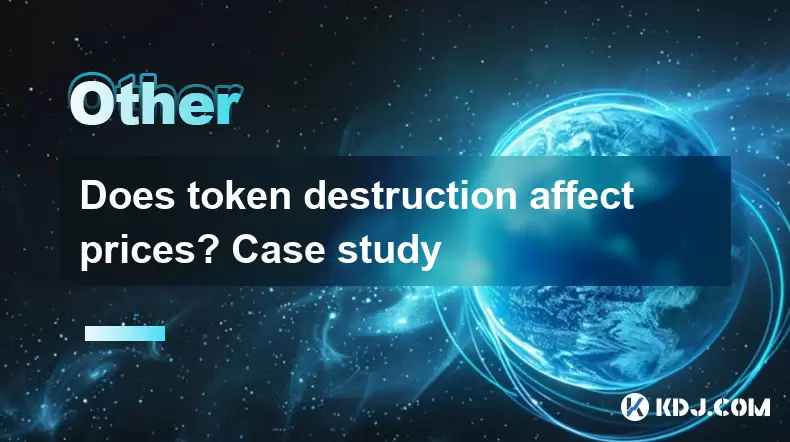
Does token destruction affect prices? Case study
Jun 22,2025 at 02:50am
Understanding Token DestructionToken destruction, commonly referred to as token burning, is a process where a portion of cryptocurrency tokens is permanently removed from circulation. This is typically done by sending the tokens to a non-recoverable wallet address, effectively reducing the total supply. Projects may implement token burns to create scarc...
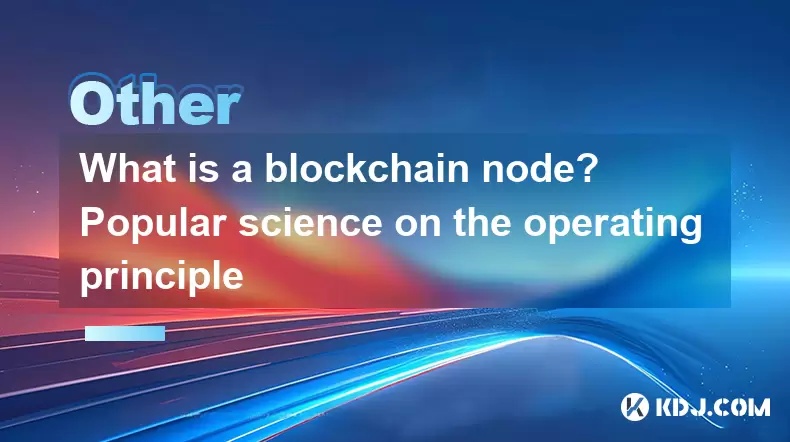
What is a blockchain node? Popular science on the operating principle
Jun 22,2025 at 11:00pm
Understanding the Basics of a Blockchain NodeA blockchain node is essentially a computer connected to a blockchain network that participates in validating and storing transaction data. Each node plays a critical role in maintaining the integrity, transparency, and decentralization of the blockchain. Unlike traditional centralized systems where a single ...
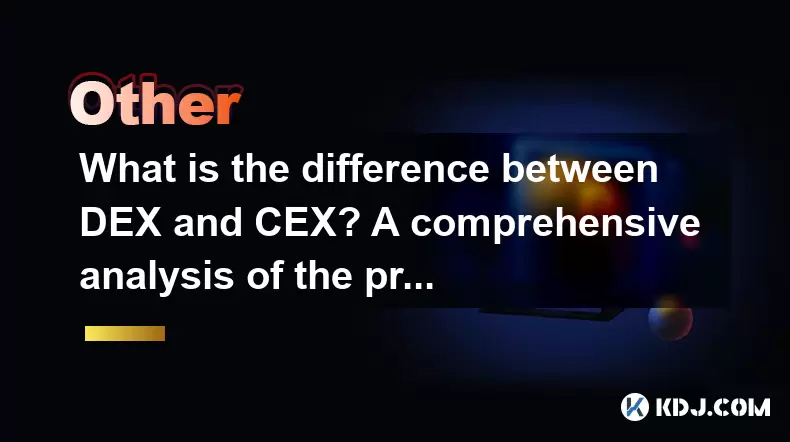
What is the difference between DEX and CEX? A comprehensive analysis of the pros and cons
Jun 24,2025 at 09:42am
What is a DEX (Decentralized Exchange)?A DEX, or Decentralized Exchange, operates without a central authority. Unlike traditional platforms, DEXs allow users to trade cryptocurrencies directly from their wallets. These exchanges rely on smart contracts to facilitate transactions, ensuring that no intermediary holds user funds. One of the most notable fe...
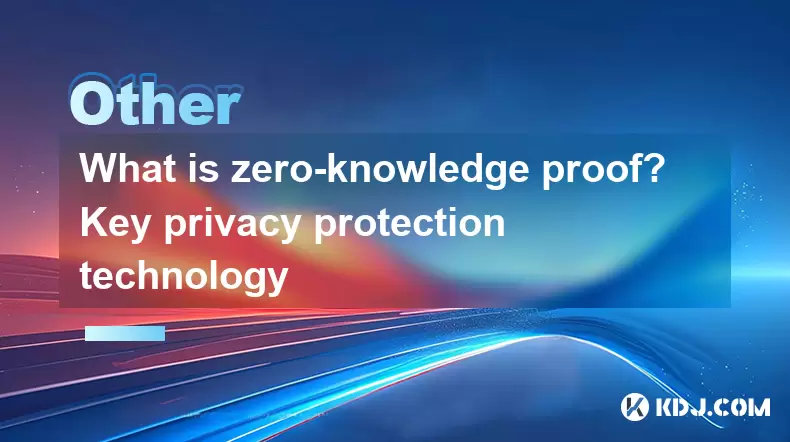
What is zero-knowledge proof? Key privacy protection technology
Jun 22,2025 at 07:29pm
Understanding Zero-Knowledge ProofZero-knowledge proof (ZKP) is a cryptographic method that allows one party to prove to another party that they know a value or information without revealing the actual content of that information. This concept is particularly important in the realm of privacy protection technologies, especially within blockchain and cry...
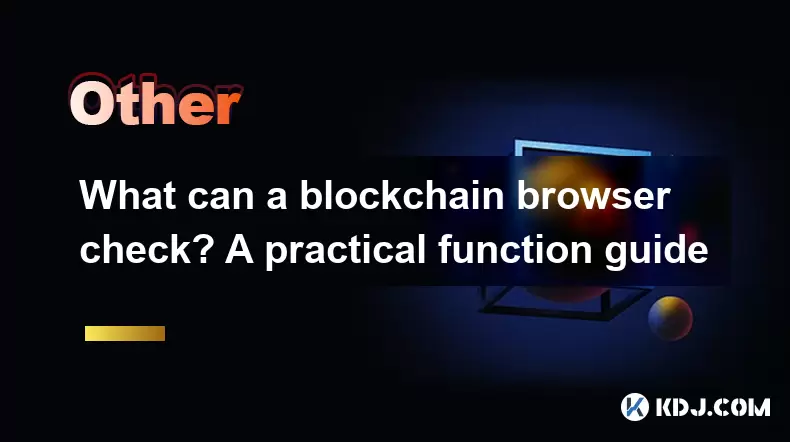
What can a blockchain browser check? A practical function guide
Jun 20,2025 at 07:35pm
Understanding the Role of a Blockchain BrowserA blockchain browser serves as a powerful tool for anyone interacting with blockchain networks. It allows users to explore, verify, and analyze data stored on the blockchain in real time. Unlike traditional ledgers or databases that are centralized, blockchains are decentralized and publicly accessible. This...

What is an oracle in blockchain? Detailed explanation of its role
Jun 21,2025 at 06:14am
Understanding the Concept of an Oracle in BlockchainIn the realm of blockchain technology, an oracle is a trusted third-party service that connects smart contracts with real-world data. Smart contracts are self-executing agreements where the terms are written directly into code and run on a blockchain network. However, these contracts operate in a close...

Does token destruction affect prices? Case study
Jun 22,2025 at 02:50am
Understanding Token DestructionToken destruction, commonly referred to as token burning, is a process where a portion of cryptocurrency tokens is permanently removed from circulation. This is typically done by sending the tokens to a non-recoverable wallet address, effectively reducing the total supply. Projects may implement token burns to create scarc...

What is a blockchain node? Popular science on the operating principle
Jun 22,2025 at 11:00pm
Understanding the Basics of a Blockchain NodeA blockchain node is essentially a computer connected to a blockchain network that participates in validating and storing transaction data. Each node plays a critical role in maintaining the integrity, transparency, and decentralization of the blockchain. Unlike traditional centralized systems where a single ...

What is the difference between DEX and CEX? A comprehensive analysis of the pros and cons
Jun 24,2025 at 09:42am
What is a DEX (Decentralized Exchange)?A DEX, or Decentralized Exchange, operates without a central authority. Unlike traditional platforms, DEXs allow users to trade cryptocurrencies directly from their wallets. These exchanges rely on smart contracts to facilitate transactions, ensuring that no intermediary holds user funds. One of the most notable fe...

What is zero-knowledge proof? Key privacy protection technology
Jun 22,2025 at 07:29pm
Understanding Zero-Knowledge ProofZero-knowledge proof (ZKP) is a cryptographic method that allows one party to prove to another party that they know a value or information without revealing the actual content of that information. This concept is particularly important in the realm of privacy protection technologies, especially within blockchain and cry...

What can a blockchain browser check? A practical function guide
Jun 20,2025 at 07:35pm
Understanding the Role of a Blockchain BrowserA blockchain browser serves as a powerful tool for anyone interacting with blockchain networks. It allows users to explore, verify, and analyze data stored on the blockchain in real time. Unlike traditional ledgers or databases that are centralized, blockchains are decentralized and publicly accessible. This...
See all articles

























































































